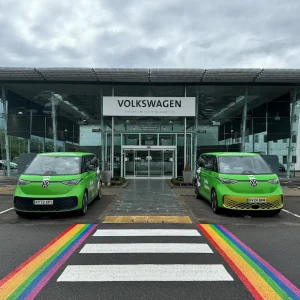A new treasury fund to help Government departments introduce ultra low-emission vehicles has been announced, with the target of 150 in the first wave of the scheme that will be widened in September to include funding for a further 135 public sector vehicles including councils, ambulance services and police forces.
Charging points and infrastructure will also be included in the pot, which will mainly be used to fund the lease on the first two years of electric vehicles, with the intention being that they will then have proved themselves cost-effective enough to be kept on out of departmental vehicle budgets.
“The Government is going to put its money where its mouth is, we are committed to the uptake of ultra low-emission vehicles,” said Baroness Kramer, speaking to an exclusive group of journalist including BusinessCar at the launch event at the HM Treasury headquarters in London this morning. “We are in a position to say we can go to every Government department and look at as they replace their car fleet, where can they go ultra low-emission.”
“We hope very much that not only Government leads the way but that the people that use them will be advocates,” she continued. “I’ve spoken to local authorities that are already using these vehicles and the best sales people are the ones that have been using them for their work.”
The Government car service and Department for Transport will be first to gain access to the funding, with the 20 Government departments all coming on stream soon afterwards. “The art is to give support to the industry to help get it off the ground but still watch the taxpayers’ penny,” added Baroness Kramer. “We’ve got to get to the tipping point.” Cabinet secretary Oliver Letwin also revealed that charge points would be installed in Downing Street.
“This is about the Government taking a lead ourselves and demonstrating how these vehicles fit into conventional fleets,” added Treasury minister Danny Alexander. “I would like us to get to the point where all Government cars are electric, though there may be specific tasks where that’s not possible.”
Once we have started the ball rolling, these vehicles will need to be accommodated into the general running costs of the fleet. The value case will be established; electric vehicles are far more cost-effective to run.”
The Energy Saving Trust will be helping advise Government departments on where plug-in vehicles might best be implemented, and these will then be leased from companies on the Government’s buying framework in the same way as conventional vehicles, though with reviews at six, 12 and 24 months to analyse their impact from both cost and operational viewpoints.
“We expect them to be taken into fleets at the end of that time,” Sophie Tredinneck, policy advisor for the Office for Low Emission Vehicles, told BusinessCar.





